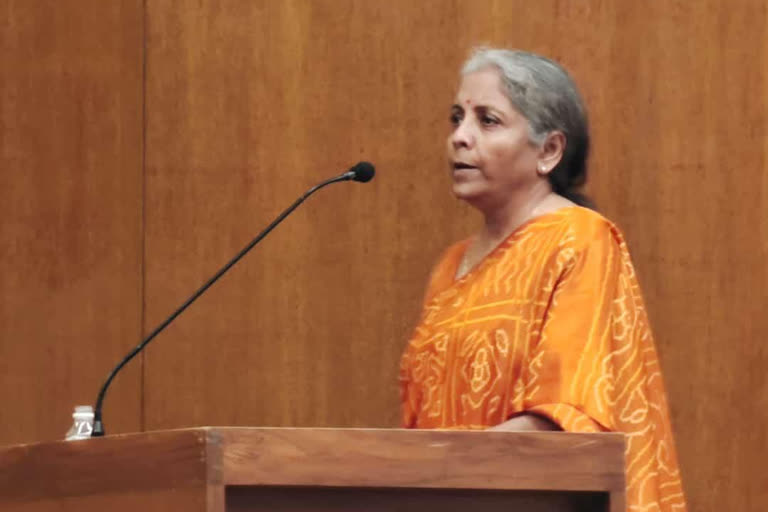New Delhi: As states take to lockdowns amid the severe Covid crisis, the Finance Ministry in a report has said that second wave of the Covid-19 poses downside risk to economic activities during April-June, although the impact is expected to be muted compared to that in the first wave.
The 'Monthly Economic Review' for April 2021 published by the Department of Economic Affairs (DEA) said that learning to "operate with COVID-19" provides a silver lining of economic resilience amidst the second wave.
"The second wave of COVID-19 has posed a downside risk to economic activity in the first quarter of FY 2021-22. However, there are reasons to expect a muted economic impact as compared to the first wave. Learning to "operate with COVID-19", as borne by international experience, provides a silver lining of economic resilience amidst the second wave," it said.
Noting that the global economy recovered further in March and April, powered with vaccination drives and fiscal stimuli by few large economies, it said that in India the momentum in economic recovery since the first wave moderated in April due to the second wave of coronavirus.
It said that agriculture continues to be the silver lining with record food grain production estimated in the ensuing crop year on the back of predicted normal monsoons.
Rural demand indicators like tractor sales recorded a growth of 172 per cent and 36 per cent compared to a low base in March 2020 and even the pre-Covid month of March 2019 respectively.
Industrial production showed mixed trends. While Index of Industrial Production (IIP) in February 2021 registered a broad-based decline of 3.6 per cent (YoY) and 3.9 per cent compared to January 2021, the eight-core index posted a growth of of 6.8 per cent (YoY) in March 2021 and 11.1 per cent compared to February 2021.
In FY 2020-21, the core sector contracted by 7 per cent compared to 0.4 per cent growth in FY 2019-20 with fertilizer being the sole growing sector and electricity recovering steadily in the second half.
The Purchasing Managers Index for manufacturing rose further to 55.5 in April with consumer goods as the strongest-performing category, followed by capital goods and then intermediate goods. The rebound was also reflected in RBI's survey estimates on capacity utilization and manufacturers' optimism for the current year, the report said.
In the second half of FY 2020-21, GST collections registered a good growth and collections exceeded Rs 1 lakh crore in each of the last six months owing to economic recovery. GST collections registered another record high of Rs 1.41 lakh crore in April, indicative of continual economic recovery.
India to breach fiscal deficit target in FY22, estimates Fitch Solutions
Meanwhile, economic research agency Fitch Solutions has estimated that India is likely to breach its fiscal deficit target in the financial year to March 2022 mainly due to revenue shortfall. In simple terms, fiscal deficit is the difference between total revenue and total expenditure of the government in a given financial year.
"We at Fitch Solutions forecast the Indian central government deficit to come in at 8.3 per cent of GDP in FY22," Fitch Solutions said on Friday.
"Revenue shortfall remains the main driver of our wider deficit view, as we expect the government to maintain its spending targets."
The government is targeting a deficit between revenue it earns and what it spends at 6.8 per cent of the gross domestic product (GDP) in FY22 (April 2021 to March 2022).
Central government expenditure is likely to be around the project of Rs 34.8 lakh crore as it looks to maintain its high pandemic-period spending so as to bolster pace of economic recovery.
Against this, revenue are likely to come in at Rs 16.5 lakh crore, down from government estimate of Rs 17.8 lakh crore on the back of an impaired outlook for India's economic recovery in FY22 as a result of the ongoing health crisis.
Fitch Solutions said its less optimistic view on the Indian economy was also reflected in its real GDP growth forecast of 9.5 per cent in FY22, a full percentage point below the government's 10.5 per cent projection. "A weaker economic recovery will weigh on the recovery in revenue collection."
(With Agency Inputs)



